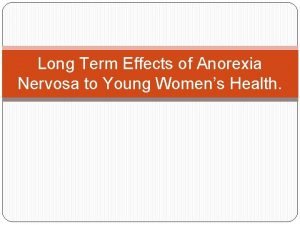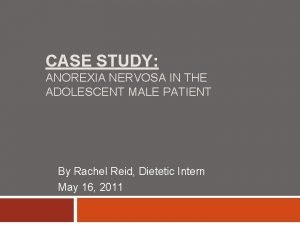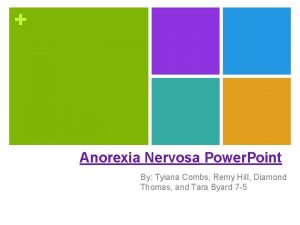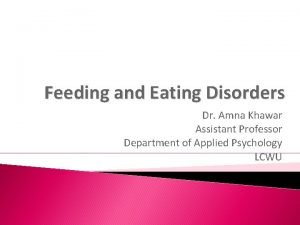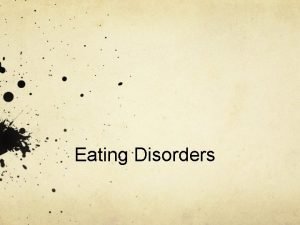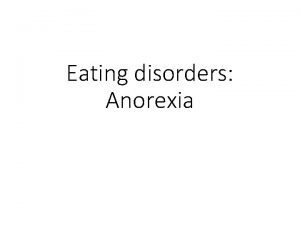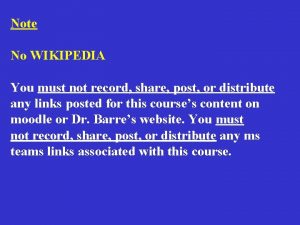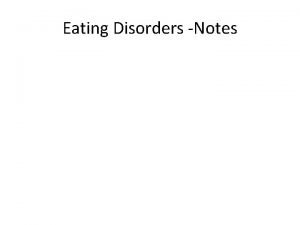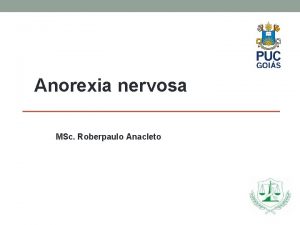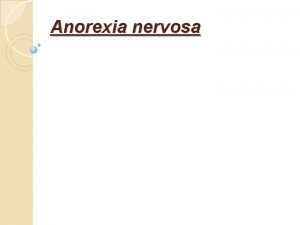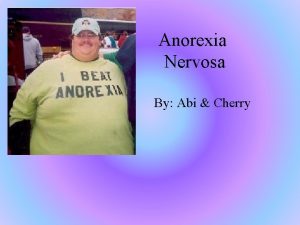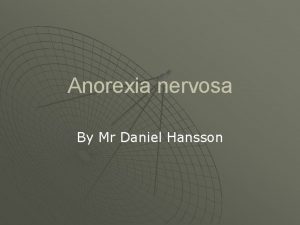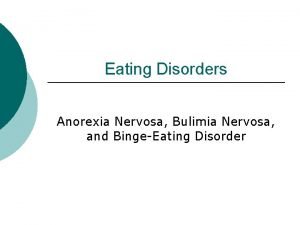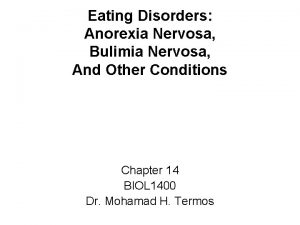Anorexia Nervosa and the SocioCultural Hypothesis Anorexia Nervosa









- Slides: 9

Anorexia Nervosa and the Socio-Cultural Hypothesis

Anorexia Nervosa a culture bound Syndrome? EDs are relatively unique with regard to the extent to which socio-cultural factors influence prevalence, development and aetiology (Gordon, 2001) What kind of evidence would support this statement? What specific cultural factors do you think might be particularly influential?

Symptoms Many symptoms are shared between Western sufferers and non-Western cultures (such as India and Hong Kong) However non-Western sufferers do not seem to have the same intense fear of fatness and body image disturbances Food refusal in usually linked to some somatic issue such as feelings of bloatedness or blockages

Cultural Relativism and Diversity Lee (2001) explains that the experience of people with AN is very diverse the world over. Emaciation, food refusal and amenorrhea are universal symptoms however these must be evaluated in their cultural context In many middle Eastern cultures fasting for long periods is a sign of religious piety

Diagnosing AN in non-Western samples All diagnostic systems for AN created according to Western standards for abnormal eating This means some people may not get a diagnosis if they don’t fit the description but are in fact demonstrating a culturally different manifestation of the same underlying disorder When people do not fit the “fat phobia” criteria they may be dismissed as not having the disorder making CC prevalence hard to assess reliably

Mumford and Whitehouse, 1988 It seems that AN is less common in people from non-Westernised cultures however there is one interesting exception; British Asian school girls (Mumford and Whitehouse, 1988) 204 Asian and 355 non-Asian white schoolgirls in N. England; self report measures sued to indicate anyone who might have an ED These girls were interviewed further and it was found that 3. 4% of the Asian girls and 0. 8% of the non-Asian girls reached the threshold for diagnosis of BN Girls from more traditional Asian families were more likely than the girls from more Westernised Asian families to exhibit BN symptoms Researchers concluded that tensions between differing values at home compared with peer group may be influential It is interesting to note that on a larger scale, women in countries experiencing major social and political change seem to be at greater risk

Era bound syndrome? In the UK EDs have been on the rise since the 1960 s coinciding with a wave of societal changes Gordon (2001) explains: cultural upheaval may be influential in a female identity crisis Wolf (1991) women moved into education and work, expectation of achievement and performance conflicting with traditional stereotypical expectations of dependency and submissiveness Create a sense of uncertainty, self doubt and powerlessness

Lahore, Pakistan (Mumford, 1992) Rate of BN similar in English-speaking schoolgirls here compared with white UK schoolgirls These Pakistani girls were from upper-middle class backgrounds and had adopted a variety of Western attitudes, lifestyle choices and values. When new values regarding female equality conflict with family values such as filial piety and deference to men, tensions may result

EDs in LGBT populations https: //www. nationaleatingdisorders. org/eatingdisorders-lgbt-populations
 Unit 3 lesson 6 anorexia nervosa and bulimia
Unit 3 lesson 6 anorexia nervosa and bulimia Short term effects of anorexia
Short term effects of anorexia Case study on anorexia nervosa
Case study on anorexia nervosa Anorexia nervosa ppt
Anorexia nervosa ppt Anorexia nervosa
Anorexia nervosa Anorexia nervosa syptoms
Anorexia nervosa syptoms The diagnostic term anorexia nervosa literally means
The diagnostic term anorexia nervosa literally means Anorexia nervosa definition wikipedia
Anorexia nervosa definition wikipedia Anorexia nervosa ap psychology definition
Anorexia nervosa ap psychology definition Anorexia nervosa is characterized
Anorexia nervosa is characterized

